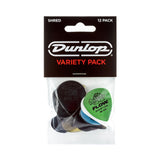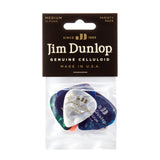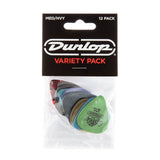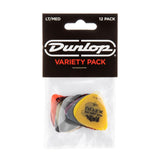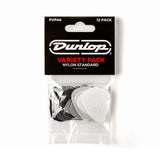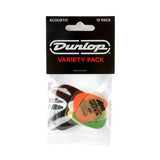Gotoh tuners are one of the most popular items we sell here at Northwest Guitars. Combining high quality construction with a very reasonable price, they often find their way onto the guitars of large manufacturers such as Fender, Ibanez, Yamaha, and Martin Guitars to name but a few.
Tuners make a great upgrade for your guitar with a minimum of fuss during installation, particularly if you’re replacing like for like. A new set of tuners can enhance sustain, bring greater tuning stability, and increase the accuracy of your tuning.
The History of GotohFounded in July 1950 by Masao Gotoh, Gotoh began life manufacturing musical strings for violin, alongside a few other ‘gut’ products. Steel and nylon bowstrings soon followed before the establishment of a limited company in 1960, where the manufacture of guitar parts began.
Despite being the only manufacturer of stringed instrument parts in Japan, their constant product development and manufacturing process improvements have given Gotoh a well-earned name in the guitar part game. Over the decades since their inception Gotoh have expanded their range to include tuners, bridges & tailpieces, licensed Floyd Rose tremolos, as well as licensed Wilkinson bridges.
When it comes to tuners you’ll find Gotoh on many intermediate to high-end guitars, and they have rapidly become the *ahem*, go-to for any guitarist looking to improve the stock tuning machines on their instrument. Sitting at a mid point between ‘bargain’ tuner sets and the more opulent end of the tuner scale, the quality you get for the price you pay is frankly astonishing.
Installing Guitar Tuners
Although changing tuners is one of the easier upgrades you can do yourself, there are some potential pitfalls, particularly when you're changing from one tuner type to another. Here we’ve outlined what obstacles you can expect to come across when changing your tuners.
Like for Like TunersModern Tuners tend to have a nut that goes on the front face of the headstock to hold them in place. This means that you shouldn’t need anything else other than the tuners when swapping modern tuners like for like. You may need to adjust the mounting screw location however, particularly when changing brand of tuner, and you can find more info on that further down the page.

If you’re swapping like for like Vintage Tuners, then again it will probably only require a straight swap with minimal adjustment. The majority of vintage tuners come supplied with the correct bushings, usually colour matched to the tuner set for aesthetic equilibrium, as well as screws for mounting.
Modern to Vintage TunersWhen changing from a modern style tuner to a vintage style tuner, you will need a set of conversion bushings to ensure the proper fit. Generally speaking most vintage tuners come with 8mm bushings, which will be too small to fit into a modern tuner hole. Luckily conversion bushings are a low cost and easy to install way to get around this potential problem.
Head to our website to see all of our conversion bushings if you need a set.
Vintage to Modern TunersWhen moving from vintage to modern tuners, it will likely be the case that your tuning post holes are too small, which means they will need enlarging in order to fit. A tapered reamer drill bit with a parallel section is ideal for this kind of work as you can get the perfect size without any chance of damaging the finish on your headstock.
Another way to achieve this effect is by using the reverse mode on your drill. With the drill in reverse mode and the correct sized drill bit, you can prevent any tearout of the wood and prevent any damage to the surface of the instrument.
Mounting Screw LocationYou may well need to drill new pilot holes to get modern tuners to fit if you’re replacing vintage tuners, and it’s something you should take into account even when swapping like for like, as different manufacturers and tuner types can still have the mounting screw in different locations.
Drilling new pilot holes is not as difficult as you might think however, all you need is a drill bit that is slightly smaller in diameter than your mounting screw, and a bit of tape to wrap around the drill bit so you can visualise the length of the screw. If you line up your screw with your bit, then tape where the top of the thread lines up with the bit, you’ll know just how far to drill, preventing you from going too far into the wood. Make sure you line all the tuners up first, mark the holes, and then drill, otherwise you might end up with a wonky looking headstock.
If you’re not happy with the unsightly look of a wayward screw hole, a great tip is to fill it using a small dowel or tooth pick, which also has the added benefit of preventing any moisture entering the inside of your headstock. Taking this step ensures a great look for your guitar to match your shiny new tuners!
Our Top PicksNow that we have all the information we need to install our own tuners, let’s have a look at some of the best offerings from the genii at Gotoh!
Gotoh SD91 Vintage TunersOur most popular vintage tuner, the Gotoh SD91 Vintage Tuner is used on a lot of American-made Strat and Tele guitars which is proof enough of their quality. They come with 8mm push fit bushings as standard, so you will need 10mm conversion bushings if you’re fitting them to a guitar with modern tuners.
Gotoh SG381 Modern TunerThe Gotoh SG381 Modern Tuner features something called a’ rock-solid’ string post, which is designed to maximise stability and eliminate any rattle in the post. This way the transmission of string vibrations across the guitar will be at its optimum, resulting in a superior sound. These tuners are completely sealed and permanantly lubricated to ensure better contact between the worm and spur gear wheels for increased durability.
Gotoh SG381 Locking TunersThis locking version of the Gotoh SG381 utilises Gotoh’s ‘Magnum Lock’ technology, with a knurled thumbwheel at the back of the tuner to clamp the string in place. With the same ‘rock-solid’ post technology as the regular SG381, plus the added security of a locking mechanism, these tuners deliver superior performance over the vast majority of those fitted as stock. A perfect upgrade for any tremolo-equipped guitar!
Gotoh GB707 Bass TunersIf you want to improve the way your bass guitar plays, look no further than the Gotoh GB707, a thoroughly modern tuner for the four string players out there. Like everything else Gotoh make, this is a super high quality tuner with unique elastic parts to eliminate any rattle in the post and a well lubricated interior for smooth tuning action and reliability.
In ConclusionChanging your guitar tuners is a relatively simple task that can potentially elevate your instrument well beyond what it’s currently capable of. With a little knowledge and planning, you can significantly improve the playing potential of your guitar, without spending loads of money to get there. If you’re unsatisfied with your guitar’s performance, and you’ve looked at all the other potential culprits for issues, then changing your tuners is a no brainer when it comes to getting a better playing experience.
Learn MoreFor a more general overview of tuners, check our our Ultimate Guide to Guitar Tuners.
Understand more about your guitar nut with our Guitar Setup Guide.
Your tuners work hand in hand with your bridge, so it’s critical learn about the different Types of Guitar Bridges.



















